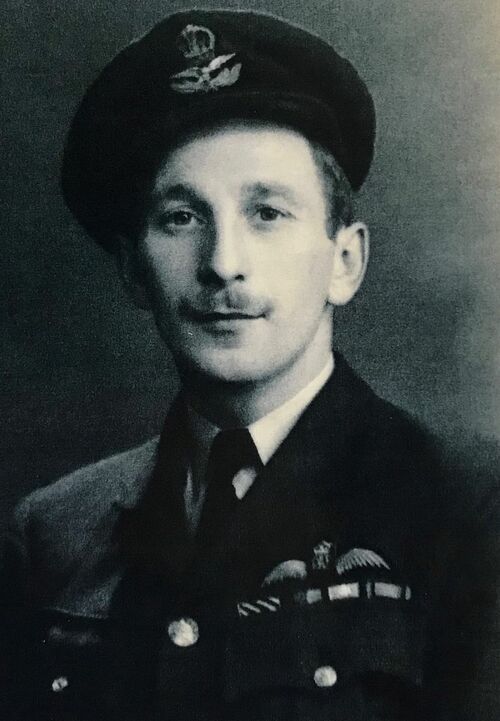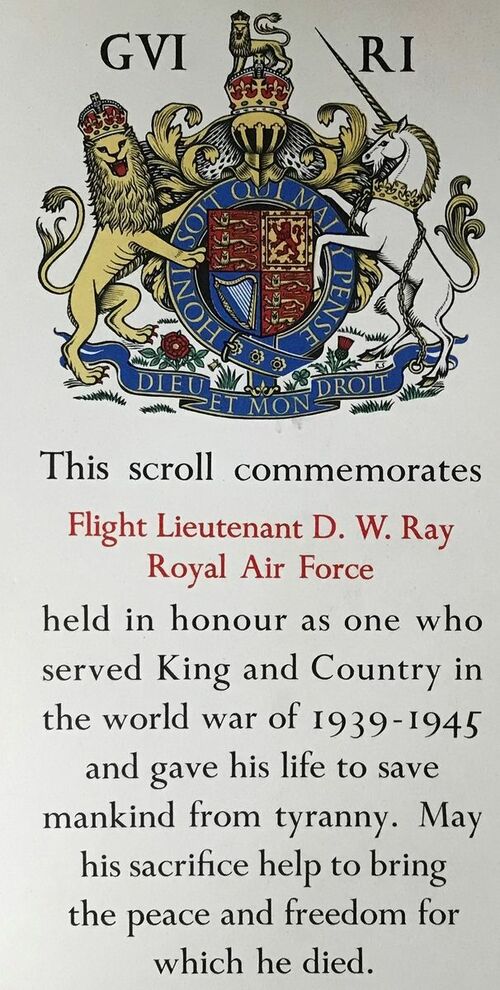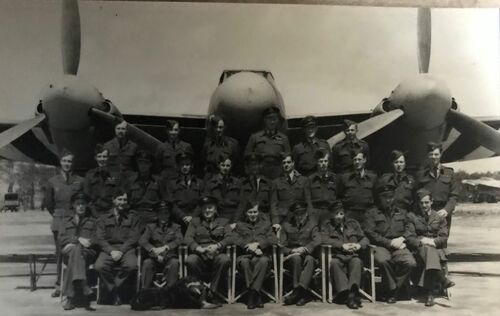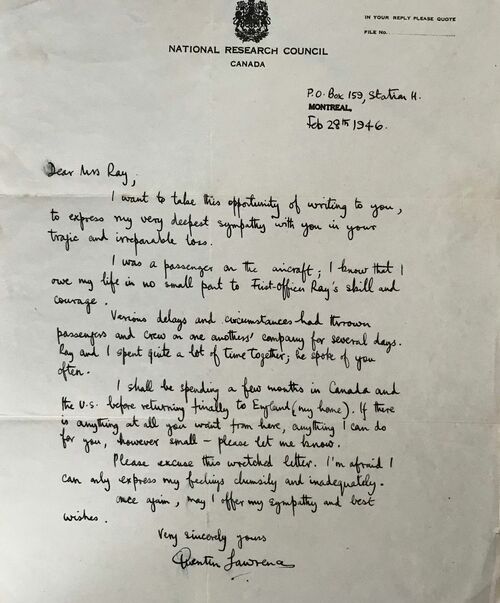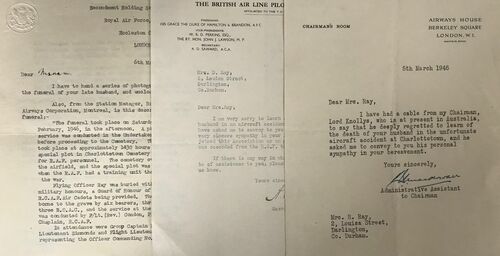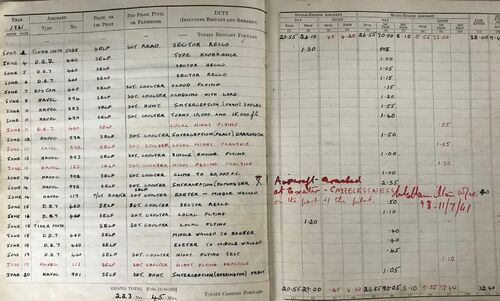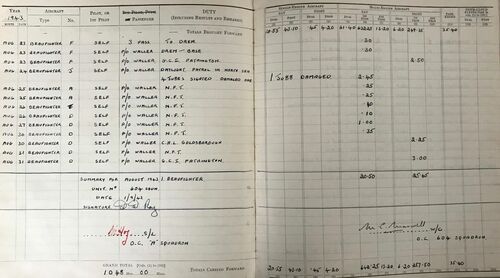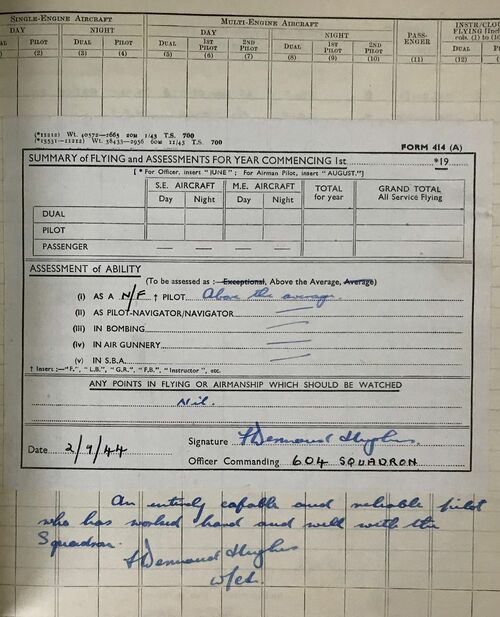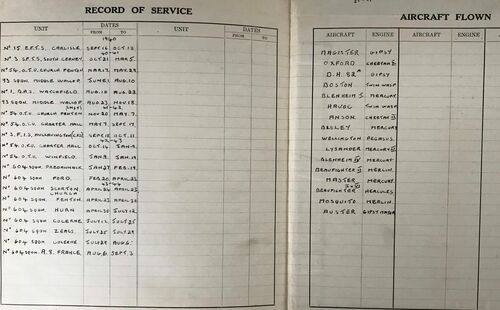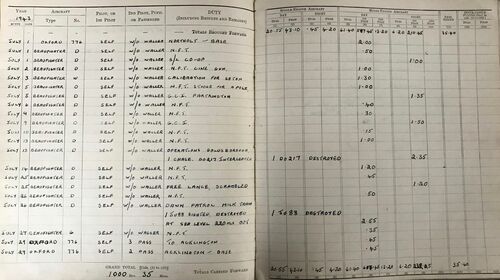Auction: 23001 - Orders, Decorations and Medals
Lot: 402
(x) 'A first class Night-Fighter pilot who's [sic] speciality is bad weather flying, day and night. Ray's flying career has always been marked by his tremendous keenness to get to grips with the Hun and to this end he has often flown when the risks involved were very great, both by day and night. He has destroyed 1 enemy aircraft by day and 1 by night but the flying effort involved to get these Huns in my opinion fully merits the award of the Distinguished Flying Cross.'
Glowing remarks by Wing Commander I. E. Chalmers-Watson, No. 142 Wing, supporting his D.F.C.
The 1944 D.F.C. group of five awarded to Flight Lieutenant D. W. Ray, Royal Air Force, who saw service with No. 93 and 604 Squadron; he was credited with destroying 2 German aircraft and damaging another whilst flying Beaufighters
Ray lost his life whilst co-Pilot of a British Overseas Airways Corporation Liberator which burst into flames upon crash landing at Charlottetown Airfield in Quebec, Canada on 21 February 1946
Distinguished Flying Cross, G.VI.R., the reverse officially dated '1944 '; 1939-45 Star; Air Crew Europe Star; Defence and War Medals 1939-45, sold together with a named and addressed O.H.M.S. box of issue, good very fine (5)
D.F.C. London Gazette 23 January 1945, the original recommendation states:
'This officer spent his first tour with No. 93 Squadron from March to November of 1941, carrying out Operation "Mutton", which involved a lot of hard and tedious work with distressingly little to show in the way of results.
Following this, he was posted to No. 54 O.T.U., where his value as a night flying instructor was such that he was retained for 15 months. Here again, much hard work into which he threw himself with great enthusiasm.
Now at the end of his second tour, he joined this Squadron at a time when enemy activity was spasmodic and he directed his great energy into the planning of operations to intercept the enemy North sea weather reconnaissance. Often flying in atrocious weather his efforts were rewarded by the destruction of 1 JU.88 and the damaging of another, these by day. He also destroyed a DO.217 by night.
An experienced and entirely reliable pilot, throughout his two tours has shown unrelenting enthusiasm for his work and readiness to operate in the worst weather conditions.
He is strongly recommended for the award of the Distinguished Flying Cross'.
Donald Walter Ray was born on 4 April 1922 and was a newspapers assistant from Eastbourne when he enlisted in the Royal Air Force Volunteer Reserve. Posted to 54 O.T.U. he was commissioned as Pilot Officer 4 August 1943 and was advanced Flying Officer on 4 February 1944. His first tour was with No. 93 Squadron, where he participated in Operation 'Mutton', the operational use of the 'Pandora' Aerial Mine, a contact-fused mine suspended from a parachute by a long cable and designed to be dropped in large numbers into the path of German bomber formations.
The concept was to break up a formation of enemy bombers so that they flew in a much more random way making them more vulnerable to our fighters.
The resulting weapon fitted into a cylindrical container 14in long and 7in in diameter and weighed 141b. After being released from the aircraft the obstacle deployed. It comprised, from top to bottom: a supporting parachute, a length of shock-absorber cord, the cylindrical container, an AAD bomb, 2,000ft of piano wire and, at the bottom, a second furled parachute.
When an aircraft struck the piano wire the shock wave ran up the wire, causing a weak link to break, releasing the main supporting parachute and the cylindrical container. As the container fell away the bomb was armed, and a small stabilising parachute connected to the weapon was released. Simultaneously, the shockwave travelled down the piano wire and caused the lower parachute to open. This took up a position behind the aircraft and pulled the bomb smartly down on the aircraft.
With limited results to show for their efforts, No. 93 Squadron was disbanded on 6 December 1941, it was however re-formed in 1942. Following a period as a night flying instructor at 54 O.T.U. Ray was posted to No. 604 (County of Middlesex) Squadron which spent most of the Second World War as a night fighter Squadron, flying a mix of defensive and offensive duties. Ray was able to use his well-honed skills flying Beaufighters and Mosquitoes destroying 2 German aircraft and damaging another in company with Flying Officer G. A. Waller, D.F.C. The Squadron provided night fighter cover for the invasion fleet and then for the Normandy bridgehead before moving to France from August-September 1944. Ray was posted back to England on 3 September 1944 and in January 1945 he was richly rewarded with the D.F.C., promotion to Flight Lieutenant followed on 4 August 1945.
Ray joined the British Overseas Aircraft Corporation but was tragically the only fatality when he co-Piloted a Liberator from Prestwick, Scotland to Dorval in Quebec, Canada on 21 February 1946. A newspaper report takes up the story;
'Bucking her way through winds and ice last night a big British four-engined Liberator was finally forced down here on a flight from Scotland to Dorval, Quebec and burst into flames as she touched the ground. The second pilot D. W. Ray of Montreal was killed and three other crew members badly injured.
The dead co-pilot, Donald Ray D.F.C., was a member of the R.A.F. and had served in Mosquitoes during the invasion of France, mostly doing intruder work. He was married and his widow resides in Doncaster, England.'
Captain J. N. Wilson the Supercargo of the Liberator, in another newspaper was quoted as saying:
'I was in the cockpit two minutes before the plane landed. Sometime before that obviously we were losing height. First, we were 2700 feet and when I left, we were down to 400 feet. It is my opinion that we were very iced up. The aircraft struck the runway with some force and as soon as it hit the flames started.'
An account of his funeral by a local newspaper:
'An Englishman who had fought through the war flying over the continent in Mosquitoes went to his rest in the little plot of the Royal Air Force in quiet Sherwood Cemetery here. Flying Officer David Ray, D.F.C. who was killed in the crash here last Wednesday of a giant Liberator, was accorded a military funeral as fellow officers he had never known formed a Guard of Honor from the R.C.A.F. station at Summerside. Other officers of the British Overseas Airways acted as pall bearers as they carried the flag draped casket to the waiting hearse and then from it to the open grave. Lining the way for them was a large uniformed detail from No. 60 Squadron of the Charlottetown Air Cadets.'
At the time of his death Ray was married to Rona and they lived in Louisa Street, Darlington. Ray is buried at Sherwood Cemetery, Prince Edward Island, Canada.
Sold together with a good original archive comprising:
(i)
His two Flying Log Books covering the period 16 September 1940-3 September 1944.
(ii)
Buckingham Palace Memorial Scroll in the name of 'Flight Lieutenant D. W. Ray Royal Air Force' in its O.H.M.S. envelope addressed to Mrs R Ray, 2 Louisa Street, Darlington, Co. Durham.
(iii)
Original O.H.M.S. envelope addressed to Mrs R. Ray for his D.F.C.
(iii)
Copy newspaper cuttings and photos of the funeral processions and coffin.
(iv)
Numerous original letters of condolence from The Chairman of the British Overseas Airways Corporation, The British Air Line Pilots Association, The RAF, friend, National Research Council, Canada and a very poignant letter from crew member, Bramwell Baldwin who escaped uninjured from the wreck.
(v)
Letters of condolence from friends and colleagues.
Subject to 5% tax on Hammer Price in addition to 20% VAT on Buyer’s Premium.
Sold for
£2,600
Starting price
£1100


